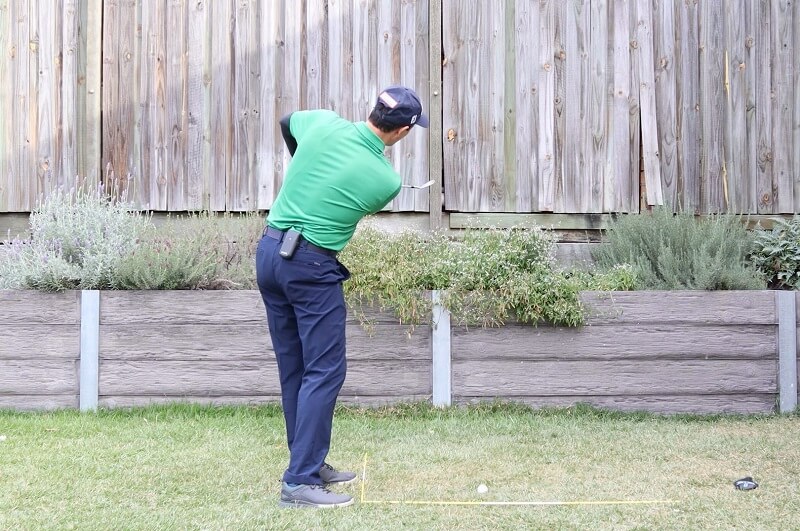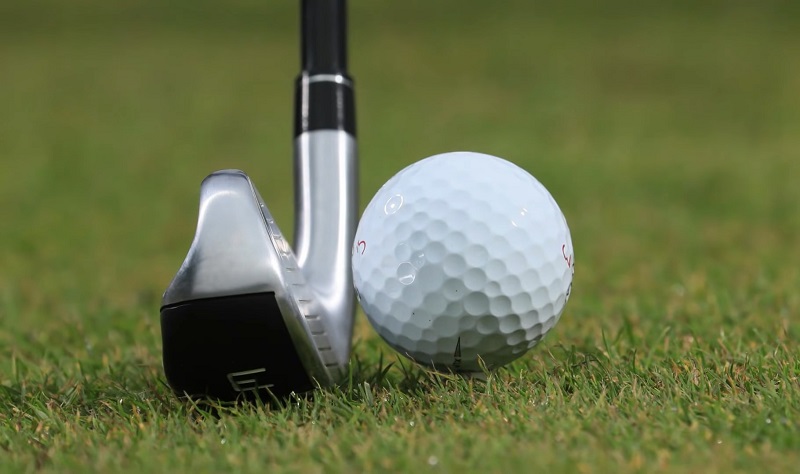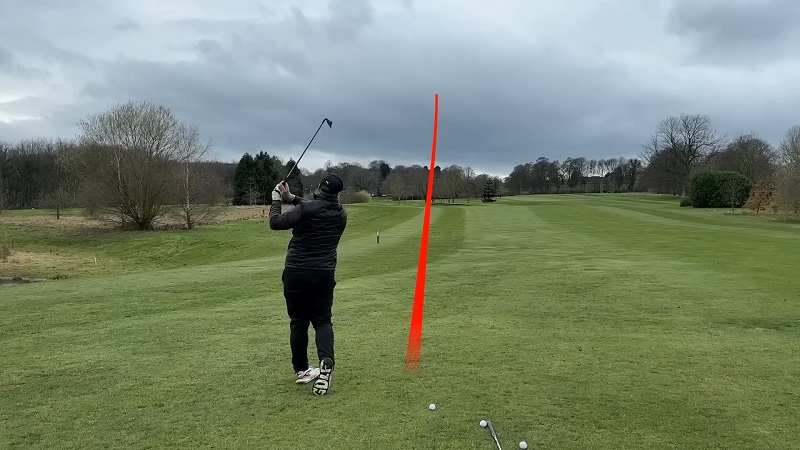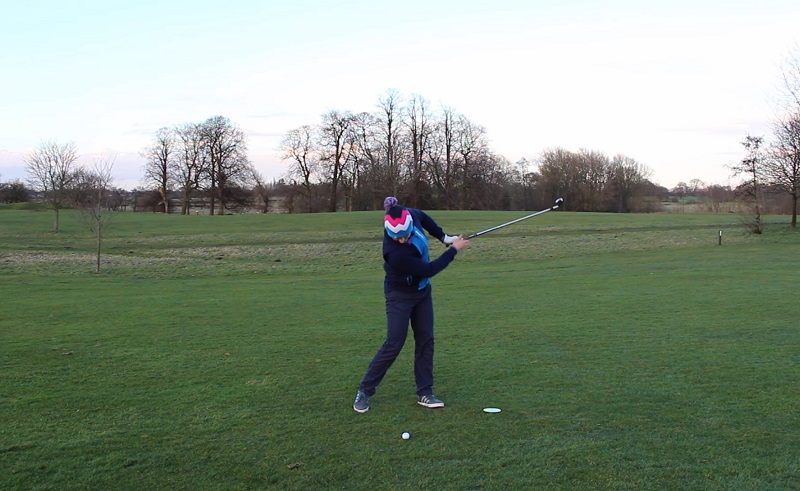The infamous chicken wing golf swing is a common problem among many players. It’s usually one of the first things golfers mention when describing their swing struggles. Let’s be honest though, it’s not the most aesthetically pleasing move on the course. While some golfers can still hit good shots with this flaw, it generally means there are deeper issues in the swing that need to be addressed.
Getting rid of the chicken wing is crucial in improving your overall game. But how do we fix it? By analyzing the root cause of the issue and taking steps to correct it, we can start to develop a smoother, more consistent swing. So let’s get to work on eradicating the chicken wing and taking our golf game to the next level.
What Is a Chicken Wing Golf Swing?
The chicken wing is a fault that golfers want to avoid during their swing. This movement occurs in the follow-through, where the lead arm detaches from the body and resembles the shape of a chicken wing. The elbow lifts upwards, and the arm flares out from the body, leading to poor shots, loss of distance, and overall frustration. While it may seem like a harmless habit to some, it’s essential to understand the negative impact it can have on your game.
What Causes A Chicken Wing In A Golf Swing?

Regarding the golf swing, a chicken wing can be frustrating for many players. While there may be a few different causes, a grip that is too strong is often the culprit. Adjusting your grip to a more neutral position could be the key to solving this problem. A lack of rotation in the body can also contribute to a chicken wing. It’s important to allow the lead arm to find a natural path as it rolls through to impact. Many players also think that the club needs to swing on a “back and through” plane rather than around the body.
As golfers age, a common flaw may be the loss of flexibility and strength, resulting in a troublesome backswing that goes straight back and through rather than rotating appropriately around the body. This motion not only affects the shot’s accuracy but also creates extra tension and stress on the body.
However, a similar mistake can be seen in newer golfers who need an understanding of the proper golf swing mechanics. Golfers of all experience levels must focus on a proper rotational swing, minimizing the risk of injury and improving their game overall.
How To Fix Golf Chicken Wing?
The chicken wing is a common issue that golfers face, but it can be addressed with the proper approach. The first step is to focus on preventing the lead arm from disconnecting from the body and bending through impact. However, it’s essential to consider any underlying issues, such as a closed clubface, that may impact your swing. If left unaddressed, remedying the chicken wing alone may cause a new issue, such as hooking the ball. Therefore, identifying the root cause of the chicken wing is crucial. Once identified, incorporating better body rotation throughout your swing can help improve your overall technique.
As you work on perfecting your golf swing, it’s important to build up to fuller swings while maintaining proper form gradually. One way to achieve this is to focus on keeping the headcover between your arm and body throughout the swing without allowing it to fall to the ground. This requires the lead arm to roll and rotate through the shot instead of flaring up and out. Doing so creates muscle memory that will help eliminate this common flaw in your swing.
If you’re struggling with your swing, consider bringing alignment sticks to the range with you to assess your stance and ball position. A closed stance could be the culprit behind your struggles, so scrutinize your alignment to ensure both are properly situated. Additionally, planting an alignment stick behind your right hip can help you focus on proper hip rotation, helping to prevent sliding or bumping during your swing. By investing in reflective practice, you can ensure that your swing is firing on all cylinders.
Tips To Avoid Chicken Wings In Golf Swing

The best way to avoid a chicken wing in your golf swing is to focus on proper form and mechanics. Start by assessing the club’s grip and ensure it’s not too strong or too weak. Additionally, ensure that the lead arm remains connected to the body throughout the backswing, allowing for a natural rotation as you transition into impact.
Next, focus on your alignment and ensure that your feet are properly positioned in relation to the ball. A closed stance can cause you to lose connection with the body during the swing, impacting accuracy and distance. Furthermore, if your posture is incorrect, this can also lead to a chicken wing, so pay attention to both areas of alignment.
Finally, practice with intention and focus on the sequence of your swing. The common problem is that golfers tend to think of their swings in terms of a “back and through” motion rather than one that rotates around the body. Focusing on a natural rotation during your swing ensures that your lead arm remains connected to its origin. You can prevent a chicken wing in your golf swing with the correct practice and mechanics.
Is Chicken Wing Bad For Golf Swing?
Developing a chicken wing in the golf swing is a common issue that can negatively impact your golf game. Not only can it harm your distance and consistency, but it can also cause shots that miss predominantly to any direction. A chicken wing’s presence can also indicate fundamental flaws and underlying issues in your swing, so it is essential to understand why you have developed this problem and how to fix the cause.
Despite its potential to hamper your golf game, your swing with a chicken wing can still be remedied with diligent practice and the use of specialized drills and products designed to fix the underlying problems. Doing so can improve your golf swing and ultimately achieve greater success on the course.
Does Chicken Wing Cause A Slice?

The chicken wing in golf is a common flaw that often causes sliced shots or misses to the right. It occurs when golfers fail to rotate their arms and hips through impact, resulting in over-the-top strikes or ‘holding the club off.’ This flaw often stems from misconceptions about how to swing the golf club, with a fear of going left, causing the brain to resist rotating around to the left through impact. However, this only leads to shots missing out to the right. A major contributing factor to developing a chicken wing is a lack of rotation in the shoulders and hips, restricting the movement of the arms and club.
Another common problem golfers face is the over-the-top club path or a poorly closed face at impact. Try placing an alignment stick through your belt buckle, pointing toward your target at the address to tackle this issue. Doing so encourages proper hip rotation and allows the arms to square up, promoting a draw rather than a slice. The ability to release the club and rotate the arms smoothly can prevent a chicken wing and lead to a full release of the swing. It may take time to master this movement, but the improvement in your swing and the results on the course will be worth it.
Why Am I A Chicken Wing In A Golf Swing?
Many factors can contribute to developing a chicken wing in the golf swing. An improper grip is one of the most common causes, as incorrect hand placement can hamper the natural swing and cause a disconnect between the arms and body. Additionally, poor posture can lead to a chicken wing as it restricts the rotation of the body and arms. Faulty swing mechanics can also cause a chicken wing, such as lifting the arms too early in the backswing or having too much lateral body movement during the takeaway.
In some cases, it is also due to fear or tension in the arms, which can lead to a stiff golf swing and cause the arms to remain straight through impact. Having this fear or tension in the body can cause the arms to disconnect from the body’s rotation and prevent a full release of the club. To combat this issue, it is important to focus on relaxation before each swing and ensure you are in the right positions throughout your entire golf swing.
Conclusion
Having a chicken wing can be annoying and frustrating, but it is fixable with the right knowledge and practice. By understanding why this problem occurs in the first place, you can identify what needs to be done to correct it and eventually overcome this common issue. You can learn to rotate your hips and arms correctly and achieve a consistent shot pattern with practice and awareness. Practicing with drills and focusing on proper technique will lead to success on the course.
So, if you are struggling with a chicken wing in your golf swing, don’t fear – focus on getting your fundamentals right and practice your swing until you master it. That way, you can overcome chicken-winging tendencies and improve your golf game.


